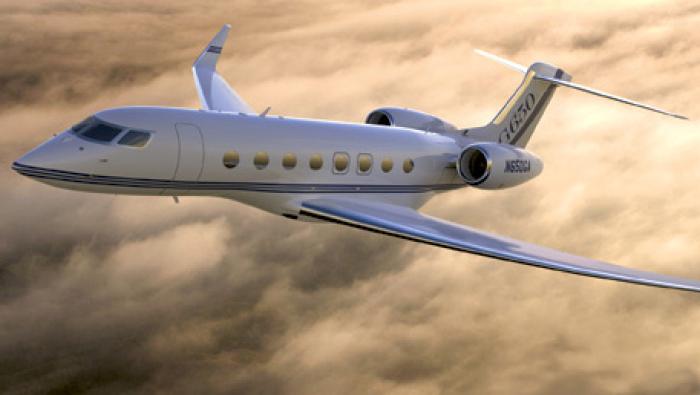by Nobuo Kishi
It takes more than a single pilot to get an aircraft off the ground. Behind every takeoff and landing is a team of aviation engineers, flight-testing experts and strategists to develop the aircraft of tomorrow. With more than 130 years of experience of building transportation systems, defense aircraft, advanced rocketry and components for commercial aviation, Mitsubishi Heavy Industries (MHI) understands the challenge of developing an entirely new aircraft, the Mitsubishi Regional Jet, for a demanding market.
In this challenge, though, we see an opportunity to set a new benchmark of excellence in regional aviation. With the Mitsubishi Regional Jet, we are committed to delivering an aircraft that offers industry-leading efficiency and environmental performance, exceptional global engineering infused with Japanese quality manufacturing, and the most comfortable cabin of any single-aisle plane.
In the process of building a completely new aircraft that will redefine its category, the path toward flight is not always as straight as a runway. I know this personally. Before joining Mitsubishi Aircraft to lead the MRJ program, I was on the staff of the company’s military fighter jet program and spent 28 years developing military technology. What we learned while developing the MRJ is that even with decades of expertise in aviation engineering, testing and certification, we underestimated how much the certification of commercial aircraft has evolved in recent years.
This issue led our program to suffer multiple delays. But we have learned from the experience and remain more determined than ever to establish a new benchmark by delivering the MRJ. To correct the situation, Mitsubishi Heavy Industries and Mitsubishi Aircraft Corporation have restructured the MRJ development program.
The process began more than a year ago when we started to bring on more engineering talent from around the world from top aircraft programs that have successfully navigated the certification process. One of the most important new hires we made was Alex Bellamy, who joined us in March of 2016. Alex has brought a tremendous amount of knowledge and experience to our program, having led flight-test and engineering teams for recent and successful commercial aircraft development programs. He started as our flight-test program manager but was quickly elevated to program director of our newly formed Project Management Office. In this role, he oversees the overall MRJ program schedule, product strategy, the program software plan, change management and the flight-test schedule.
The transformation has been bolstered by MHI’s strengthening strategic commitment to cracking the commercial aviation market, including direct oversight of the business by CEO Shunichi Miyanaga effective from November 28, 2016. We are in constant communication and can talk openly with each other.
Last year, we performed an internal audit of our program that identified several challenges and areas for improvement. In addition to the need for additional certification experience, one of the biggest challenges we saw was that employees were working in silos and not communicating enough. These factors contributed to unclear lines of responsibility and slow or sub-optimal decision-making.
Under the guidance and direction of recent hires like Alex, we’ve worked together to revamp our program in three major ways. First, we brought in more specialized talent and reorganized our engineering leadership, enabling us to build one of the best teams in the industry. Our 13 program leaders from 10 different countries now provide the knowledge and expertise needed to lead us forward. Global aviation experts work in close concert with our many leaders in Japanese design and manufacturing. We all learn from each other every day.
We call it the melting pot of Mitsubishi Aircraft Corp.
Second, we formed a new Project Management Office overarching these groups to make sure engineering decisions are integrated and linked back to the overall product strategy. Launched six months ago, this team of strategists is constantly examining the MRJ’s schedule, certification strategy and long-term future, ensuring that issues are resolved quickly by the right people. Under the PMO’s leadership, our Flight Test Center in Moses Lake, Washington, has also been restructured, with functional leaders now overseeing each flight test aircraft, clearing the path toward certification.
Last, we made several key changes to our work process. Every Friday, for instance, group leaders present their progress and lay out the challenges they’re facing in a larger setting. This move was inspired by respected executive Alan Mulally, who used weekly business review meetings at Boeing and Ford to bring a greater sense of management focus. These re-opened lines of communication between groups have increased visibility for the program and enhanced accountability for problem solving. Obstacles are now identified early and addressed through a collaborative effort.
Our transformation is already seeing major progress. In recent months, the MRJ’s development has accelerated and we’ve set important benchmarks on tests critical to achieving a type certificate. Major steps have been taken with static strength, natural icing, and cold and hot soak tests. Other milestones are within our sights, and with the right people in the right place, we are confident that we’ll continue to execute on our plan efficiently and at a high level of quality.
Indeed, the impact of this change is more profound than restructuring the MRJ development program. It’s a leap in MHI’s overall corporate transformation into a truly global company that melds worldwide engineering expertise with Japan’s legendary reputation for manufacturing quality.
Thanks to all of these changes, the MRJ is now positioned to successfully enter the market with type certification in 2019 and first delivery of the MRJ90 in mid-2020. Our innovation, precision and drive to be the best will carry us toward that goal and beyond, serving as the foundation for a world-class aerospace program built for the coming decades.
Kishi is senior executive vice president of the Mitsubishi Aircraft Corporation and executive chief engineer of the Mitsubishi Regional Jet.







